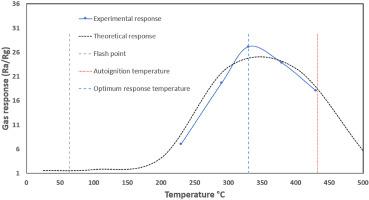Journal of Molecular Graphics and Modelling ( IF 2.9 ) Pub Date : 2020-10-26 , DOI: 10.1016/j.jmgm.2020.107791 Mudar Ahmed Abdulsattar 1 , Hussein H Abed 2 , Rashid Hashim Jabbar 1 , Nazar Mudher Almaroof 3

|
Formaldehyde (CH2O) properties such as flash point and autoignition temperature have a great effect on the temperature range of sensitivity of sensors applied to detect CH2O gas. Tin dioxide nanocrystal interaction with formaldehyde is investigated from room temperature to 500 °C using transition state and density functional theory. Gibbs free energy, enthalpy, and entropy of activation and reaction are evaluated as a function of temperature. The sensitivity and response time of SnO2 clusters towards formaldehyde are evaluated. Results show that the activation energy of SnO2 clusters with formaldehyde increases with the rise of temperature while the reaction energy decreases (in negative value) with the rise of temperature. Response time is inversely proportional to formaldehyde concentration. The highest CH2O gas-sensitive range of SnO2 is confined between the formaldehyde flash point at 64 °C and the autoignition temperature at 430 °C. The effect of partial oxidation and dissociation of formaldehyde is discussed.
中文翻译:

甲醛性能对SnO 2团簇气体敏感性的影响:DFT研究
诸如闪点和自燃温度的甲醛(CH 2 O)特性对用于检测CH 2 O气体的传感器的灵敏度温度范围有很大影响。使用过渡态和密度泛函理论研究了室温至500°C下二氧化锡纳米晶体与甲醛的相互作用。根据温度评估吉布斯自由能,焓和活化与反应的熵。评估了SnO 2簇对甲醛的敏感性和响应时间。结果表明,SnO 2的活化能甲醛的簇随着温度的升高而增加,而反应能量随温度的升高而降低(负值)。响应时间与甲醛浓度成反比。SnO 2的最高CH 2 O气敏范围限制在64°C的甲醛闪点和430°C的自燃温度之间。讨论了甲醛的部分氧化和离解的影响。


























 京公网安备 11010802027423号
京公网安备 11010802027423号